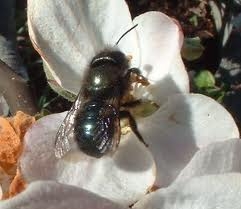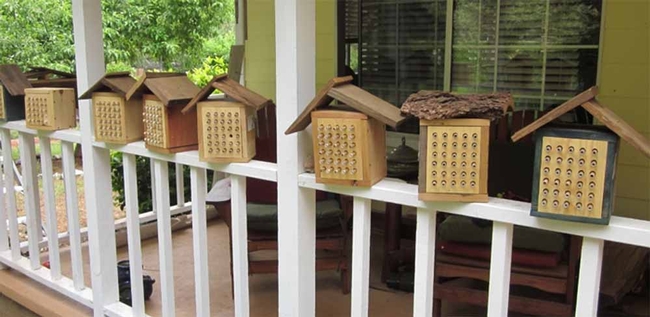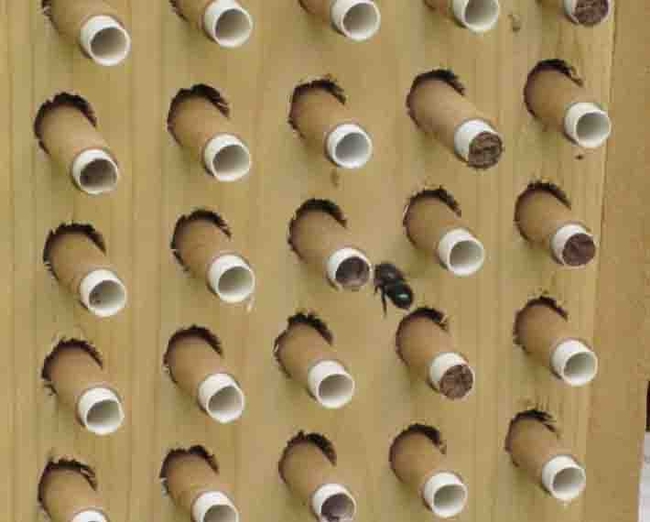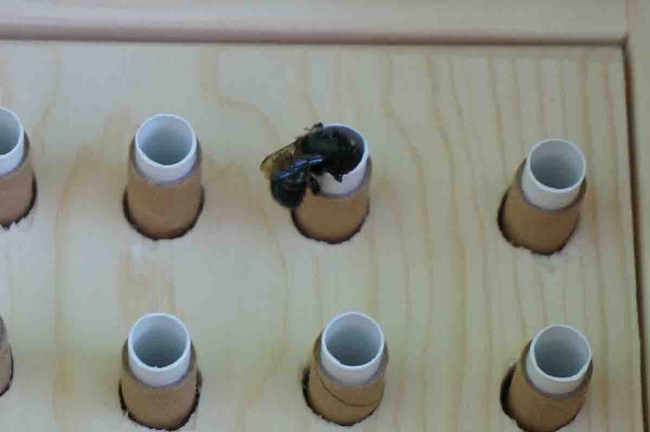As concern grows over the decline in the honey bee population, alternative pollinators are gaining attention. Mason bees, which are native to North America, are one option. These gentle-natured bees do not produce honey but they excel at pollinating and are easy to raise.

The mason bee is a solitary bee which lives in natural cavities such as woodpecker holes or hollow stems. They also seem to be just as happy in artificially-constructed nests, so long as these nests include tubes made of cardboard or paper where the female bee can lay her eggs.
Purpose-built nests, often called bee boxes, are set out in early spring when daytime temperatures regularly reach 55 degrees. The bee box is placed outside, facing south in a location that is sunny but protected from wind and rain. Because mason bees will not fly farther than three hundred yards from their nest, bee boxes must be located within range of fruit trees and flowering plants.

The mason bee gathers pollen on her underside. As she zig-zags among the blossoms she is picking up and dropping off pollen, thus pollinating the flowers as she travels. One mason bee can pollinate 2,000 blossoms in a single day. She brings pollen back to her nest and deposits it at the back of the tube, making a mound on which she will lay one egg. She then seals the space off with mud to create a cell. It is because they use mud in their nest construction that they are called mason bees.

All this activity can be closely watched since the bees don't sting. The female can be seen heading into her chamber when she is laden with pollen, and backing into her chamber when she is about to lay an egg. Sometimes she just likes to rest in the front of the chamber. This activity continues for six to eight weeks, and then the mother bee dies.
Mason bee larvae hatch a few days after their eggs are laid. The larvae eat the pollen the mother has provided and then each larva goes into a pupal stage. The following spring, the adult bees emerge. The males emerge from the nest first, the females follow, and the process begins all over again.
More information on mason bees can be found at the Crown Bees website.

UC Master Gardeners of Butte County are part of the University of California Cooperative Extension (UCCE) system. To learn more about us and our upcoming events, and for help with gardening in our area visit our website. If you have a gardening question or problem, email the Hotline at mgbutte@ucanr.edu or leave a phone message on our Hotline at 530-552-5812. To speak to a Master Gardener about a gardening issue, or to drop by the MG office during Hotline hours, see the most current information on our Ask Us section of our website.